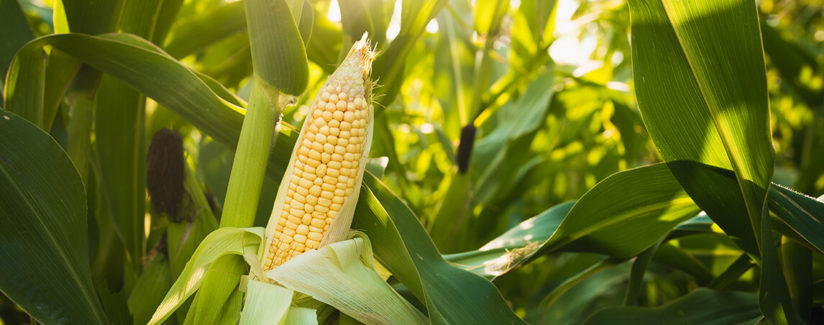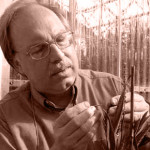
Are Pesticides Safe for the Environment?
Protecting the environment is an important concern, both for those who produce food and those who consume it. One consideration is pesticides. Pesticides are compounds that are used to control pests, such as weeds, insects or fungus, that can harm crops. We are taking a look at common questions about pesticides Are Pesticides Needed to Grow Food? Are Pesticides Safe for Food Consumption? What’s the Difference Between Pesticide-Free and Organic?
How do pesticides affect the environment where they are used? If they can harm things such as insects or weeds, could pesticides affect other things?
We asked a farmer for perspective and interviewed three university scientists to find out how pesticides impact the environment. Dr. William Vencill is a Professor of Crop and Soil Sciences, University of Georgia; Jeff Graybill is an Extension Educator in Agronomy, Penn State University; and Dr. Stephen Baenziger is a Professor of Plant Sciences, University of Nebraska. In addition, we talked to a farmer.
These experts emphasized that all pesticides sold in the United States are thoroughly tested to determine if they could cause harm.
“The compounds that become pesticides by law must be safe for the environment using rigorous tests and their review,” Dr. Baenzinger said. “If they were determined to be unsafe, they could not meet the regulatory requirements for their release. Also remember that after a pesticide is approved for release, it is still periodically reviewed to ensure no new information has been developed that may affect at how the compounds can be used.”
All systems of raising food cause some disruption to the natural environment, Dr. Vencill noted. In some cases, using pesticides is the best option.
“If we do not use herbicides, growers will use tillage for weed control that increases soil erosion, losing precious soil in the field, and also contaminating water supplies. Maximizing agricultural production so that each unit of land produces as much as possible allows society to set aside natural areas such as wildlife habitat,” he said.
Janna Splitter explained that protecting the soil is part of the reason why they use pesticides on their farm.
“My husband and I own and operate our fifth-generation family farm in central Kansas. Along with our two young daughters, we grow wheat, corn, soybeans and grain sorghum on drylands and irrigated acres,” she said. “We are a no-till farm. We choose the use of pesticides to control weeds and harmful insects vs conventional tillage (working the ground and turning the soil).”
Splitter said they take steps to use only the amount of pesticide that is needed.
“The ultimate goal each year is to raise the highest quality product in the most sustainable fashion. Having a safe and sustainable product requires intervention throughout the growing season. If there is a weed or a bug that would be detrimental to the quality of the crops we are raising, we have the obligation to control it,” she said. “It is common for us, when needed, to use an insecticide that would only target a specific insect rather than all insects. For instance, when trying to kill headworms in grain sorghum, you use a product that specifically kills headworms without damaging other beneficial insects such as ladybugs, bees, etc.”
We asked the experts for more detailed information about pesticides and the environment.
Are pesticides safe for the environment?
Vencill: “It depends on how one defines ‘safe.’ For 10,000 years, humans have been disrupting the environment to grow crops. Except for hunter-gatherers, most food production systems cause some harm to the environment. Nothing is risk free. What we must ask is, does this pesticide when used as labelled have the potential to harm ecological systems? Pesticides must undergo years of rigorous testing in a wide range of environments to show that these risks are minimal.”
Graybill: “All pesticides are thoroughly tested. It generally takes a new product 10 years or more before they are approved for market. During this time, they are tested for water quality, environmental safety and food safety.”
Baenziger: “The compounds that become pesticides by law must be safe for the environment using rigorous tests and their review. If they were determined to be unsafe, they could not meet the regulatory requirements for their release. Also remember that after a pesticide is approved for release, it is still periodically reviewed to ensure no new information has been developed that may affect at how the compounds can be used.”
What safeguards are in place to ensure unsafe levels of pesticides are not degrading our air and water?
Vencill: “Any pesticide shown to have adverse environmental effects will be pulled from the market or its use will be severely restricted. I have seen the use of several products be severely restricted over the years for environmental reasons. Regulatory agencies use developing science to adjust pesticide labels to try to protect the environment. Product labels provide critical information about how to handle and safely use the pesticide product and avoid harm to human health and the environment. But, even when label requirements are closely followed, we can’t say there is zero risk for environmental harm. Nothing is risk free.
“However, not applying pesticides for pest control also has potential to harm the environment. If we do not use herbicides, growers will use tillage for weed control that increases soil erosion, losing precious soil in the field, and also contaminating water supplies. Maximizing agricultural production so that each unit of land produces as much as possible allows society to set aside natural areas such as wildlife habitat.”
Graybill: “All pesticides go under a review process every 10 or 15 years by the EPA. Companies are required to provide data about the use of the product. Residue levels must be checked and reported, new toxicology testing is done and any university and governmental reports of contamination must be studied and evaluated. Only then will a sales license be renewed. Most products also have a MCL (maximum contaminant level) at which they are safe to use. These are typically in parts per million (PPM). If residue is found in the environment or on the food item in excess of this limit, the EPA will take action to correct the problem or ban the chemical.”
What are some common misconceptions about how pesticides effect the environment?
Vencill: “Some people seem to feel that some pesticides are not regulated, and many do not know how tightly they are regulated. Another is that the mere presence of a compound equals harm.”
Graybill: “Pesticides are only one class of chemicals with potential toxicity. When misused they can potentially contaminate the environment and harm humans. This, however, is no different than any industrial product. Gasoline is highly explosive and can easily contaminate water supplies, etc. Yet, would we consider not using it as an energy source? When used appropriately, agricultural chemicals have given us a safe, reliable food supply. The benefits far outweigh the risks.”
Baenziger: “Many people seem to think pesticides do not break down and are with us forever. There is also a misconception that pesticides are not well regulated. A prominent notion is that we know very little about how pesticides impact the environment, but there’s actually a great depth of knowledge.”
How are pesticides impacting pollinators like bees and butterflies?
Graybill: “Certain insecticides can harm insects such as bees and butterflies. The agricultural industry is aware of this and most insecticide labels have instructions on how to reduce and minimize the risk to these insects. Also, many of the more toxic compounds have now been banned and replaced by newer ones which are more targeted to specific pests.”
Some say widespread use of herbicides is resulting in weeds becoming resistant to pesticides. What’s your view of this issue?
Vencill: “It is true that herbicides select for weeds that have a resistance trait in a given field. Without herbicide use, no one would notice if these resistant weeds were present. A common misconception is that the herbicide causes a mutation leading to resistance.
“There was an interesting study in France a couple of years ago where they looked at dried samples of blackgrass (a serious weed in Europe) from the 1700s through the 1900s. They found herbicide-resistant blackgrass from 1875 – 100 years before this particular herbicide was commercialized! If growers use a diverse set of weed control tactics, then herbicide resistance can be delayed and managed. It is when growers rely on a single herbicide for weed control and use it year after year, we see more rapid herbicide resistance develop.”
Graybill: “As weeds grow and continually adapt to their environment, they will develop resistance to herbicide. It’s a natural process. This is to be expected and there are ways which farmers are working to minimize this. One practice is to no longer use just a single product, but partner two products together. Glyphosate (Roundup) is one herbicide for which some weeds have become resistant. This was due to it being over used. It was also often used as the only product. Today, when farmers are spraying herbicides they will use multiple products which slows or even prevents the development of resistant weeds.”
Baenziger: “This is a biological concern. All herbicide -resistance genes separate a resistant crop from a susceptible weed. Through mutations, weeds eventually become resistant to the herbicide (similar to the crop). That’s the way nature works. Weeds becoming resistant to a chemical is a very common process. But remember that you started with a susceptible weed, which became resistant to a herbicide, thus the pesticide is no longer useful to control that weed. Farmers were able to grow very good crops for the years the herbicide worked well. When the pesticide fails, you’re back to where you started in that the weed and the crop cannot be separated through the use of the herbicide (the herbicide has become ineffective to control that weed). However, before the weed became resistant, the producer had good choices on how to control weeds.”
Summary
Pesticides help farmers raise crops so that people have food to eat. Pesticides can have an impact on the environment and that is why they are closely tested and regulated. Guidelines help to make sure the products are used in the proper way so that they do not cause harm to the environment.
Other articles in this series:
Are Pesticides Needed to Grow Food?
Are Pesticides Safe for Food Consumption?
What’s the Difference Between Pesticide Free and Organic?





























